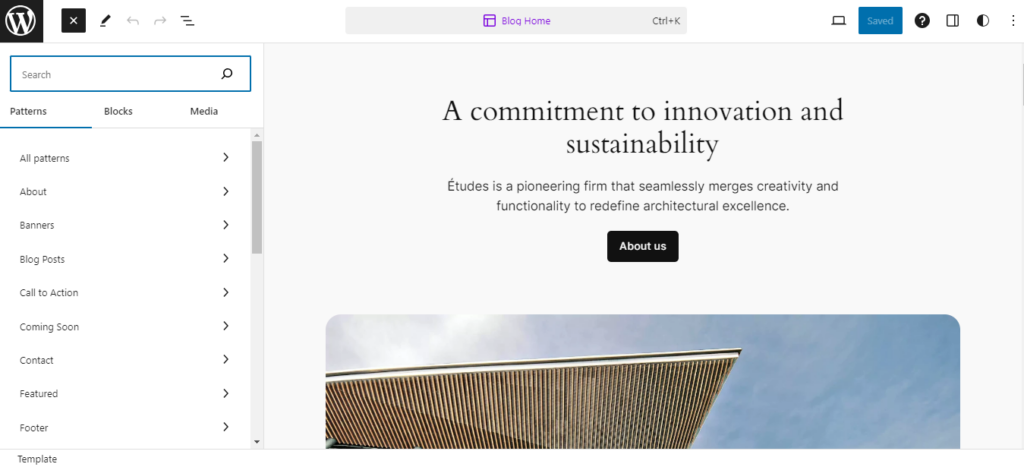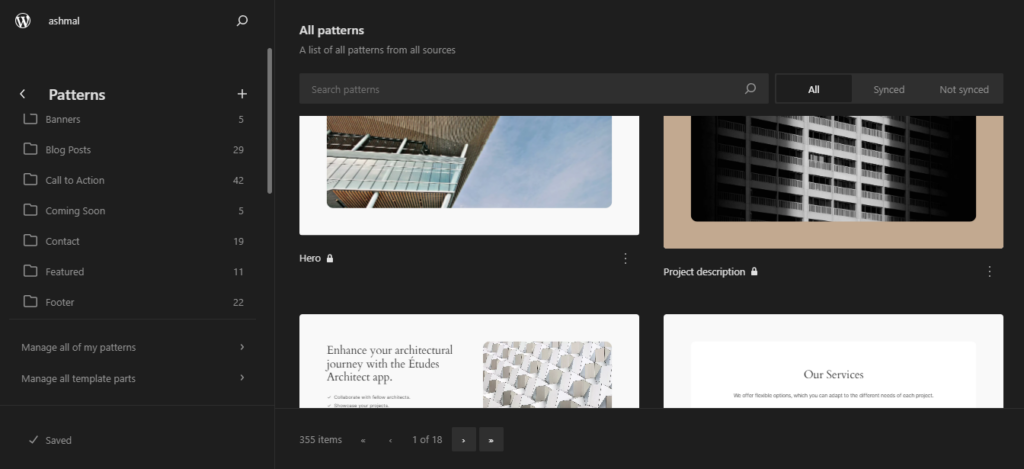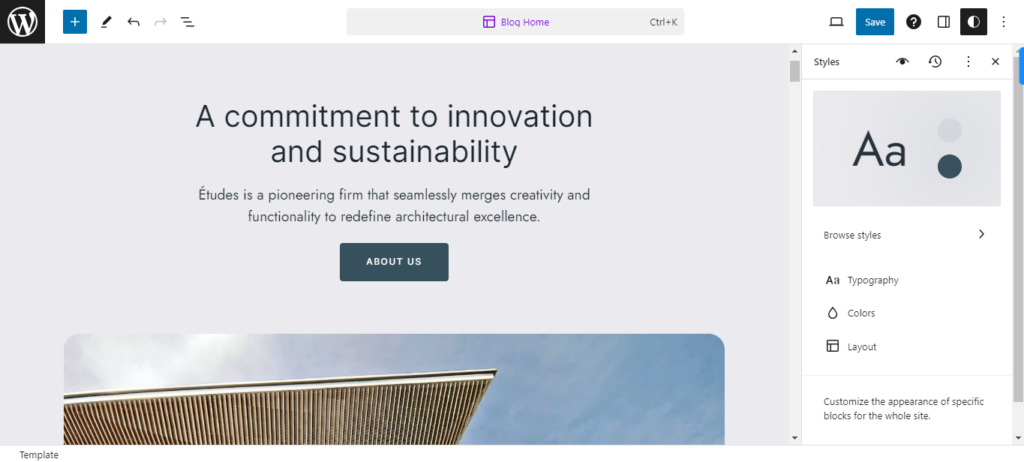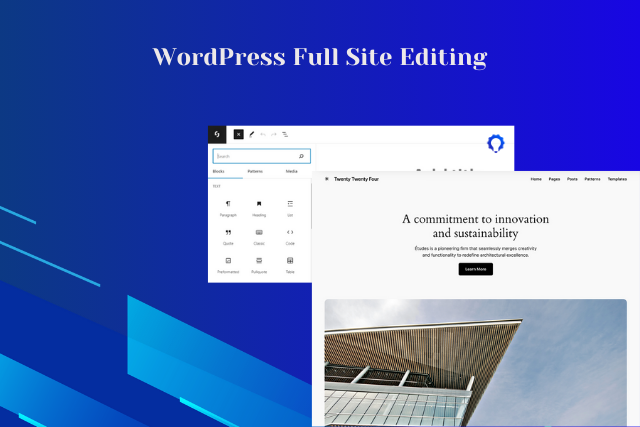You know, whenever we talk about things like whether should we choose this one, over that one?
The usual answer is: “It depends!” This happens to me every single time, I hope you can feel the same about what I’m talking about.
This “It depends” phrase stretches a lot of background work, analysis, and sometimes experiences. As you have read from the title we will be talking about WordPress Full Site Editing (FSE). But this read is more of a why Full Site Editing over traditional WordPress development processes like page builder and custom theme development.
In this blog, I will share some statistics and ease the so-called “it depends” delusion to make your choice easier for WordPress website rebuilding.
PS: I talked to some WordPress experts to know what would they like to choose – stay with me.
Choosing the Right Approach for Rebuilding WordPress Website
In the dynamic landscape of WordPress website development, business owners encounter a critical decision-making point when choosing the foundation for their site. While they frequently seek advice from developers – it is beneficial to have insights from experts – as a business owner, you can also conduct independent research to determine the best fit for your needs.
Therefore, I will talk about three primary contenders to help you make the right choice. And those options are Custom Themes, Page Builders, and the emerging WordPress Full Site Editing.
Here, I will try my best to dissect the pros and cons of each approach, emphasizing factors such as flexibility, customization, ease of use, and, importantly, cost.
What If You Go with a Custom Theme?
If you want to stand out from the crowd then, this is the most preferred option. Because custom themes are unique designs and not based on templates. Which is why they stand out from the crowd. A custom theme allows thorough optimization, contributing to a faster and more responsive website. It can be fine-tuned to accommodate business growth seamlessly, making it an ideal choice for enterprises with evolving needs.
However, there are a few things that you need to keep in mind. Custom theme development is time-intensive. On average, building a custom WordPress theme may take anywhere from 100 to 300 hours, depending on complexity and features. Besides, it requires technical expertise for post-launch work like ongoing customization and maintenance can be a barrier for businesses without in-house development teams.
Cost Factor: The extensive development involved in creating a custom theme often translates to a higher upfront cost, making it a substantial investment.
Preferring A Page Builder Over Other Options
A page builder strikes a balance between customization and ease of use. Also, it offers businesses flexibility without sacrificing simplicity. This is reflected in their adoption: 34% of WordPress users built their sites with a page builder (source: Web Almanac). Some of the most popular options are Elementor, Divi, and WPBakery.
Indeed, the reason is due to faster development. The ease of use is a significant advantage of page builders. Beaver Builder – boasts over 1 million installations whereas Elementor has over 5 million active installations.
Let’s look at the other side of the story. Sometimes, using pager builders turns into more of a nightmare for developers and businesses.
Some page builders generate excessive code, potentially impacting website performance. A study by Kinsta found that poorly coded plugins and themes are one of the leading causes of slow WordPress sites. Also, you’re assuming that the page builder will continue to be developed and supported throughout the lifecycle of your website, and you can’t tell whether it will remain compatible with WordPress’ core functionality.
Cost Factor: While page builders are generally more cost-effective than custom themes, premium options may come with additional costs.
The Full Site Editing Option
As we all know, WordPress Full Site Editing is the recent major update. Before, we discuss the process, flaws, cost, and other technicalities of WordPress FSE. Let’s look at FSE more closely.
Understanding WordPress Full Site Editing
You might have heard about this buzzing word in the WordPress community. If not let me break it down for you. Full Site Editing is a key feature that was added in the WordPress version 5.9, extending block-based editing to all areas of a website.
Some context: the WordPress block paradigm is a fundamental shift in the content creation and customization approach within the WordPress platform. Introduced with the Gutenberg editor, it redefines how users structure and design their websites by breaking content into modular, individual elements called “blocks.”
In the traditional WordPress editor, content was primarily created in a single, uninterrupted flow. However, with blocks, each piece of content, such as a paragraph, image, or a more complex element like a gallery or a call-to-action, is treated as a separate block. This modular approach allows for more granular control over the layout and appearance of each element.
WordPress Full Site Editing revolutionizes web design by allowing the use of blocks to create not only content but also every aspect of a website. It empowers designers to customize elements such as the header, footer, and templates for various page types.
A noteworthy addition to Full Site Editing is the introduction of a theme configuration file, a powerful tool for developers. This file plays a crucial role in enhancing the customization capabilities of a website, offering a centralized location to define theme settings and configurations. This inclusion marks a significant shift in how WordPress developers interact with and tailor themes, introducing a more streamlined and efficient process.
To experience the full potential of Full Site Editing, consider activating themes like Twenty Twenty-Four.

Why Businesses Should Embrace Full Site Editor
WordPress Full Site Editing can be a game-changer for businesses. It lets everyone in the team easily shape the whole look of a website, not just the words and pictures. Think of it like building with digital blocks – a simpler way to design websites.
It’s getting better over time, even though it’s not perfect yet. FSE is all about making website development more accessible and collaborative.
And this is what every business owner aims for.
Moreover, WordPress FSE allows you to create, preview, and edit the templates. You have the choice to select the default styles via the style interface and use the blocks for building your entire website. There’s a lot more with FSE, so let’s learn about the pros and advantages of the full site editor.
Streamlined Content Management
Full Site Editing is integrated directly into the WordPress core, eliminating the need for third-party plugins or external tools. This integration enables a seamless and consistent content management experience. Also, FSE provides block patterns that help you to make reusable layouts. You can use the Pattern Explorer to preview patterns and use them in your content as per your requirements.
Not only that, you can explore and choose any pattern from the WordPress repository pattern library.

Global Styles
Previously, you needed to opt for the complicated process of styling your website by using the customizer and block editor separately. But now, WordPress Full Site Editing introduces Global Styles. It gives you the freedom to customize elements across your entire site like typography, color, pages, posts, and native Gutenberg blocks.

More Noticeable Advantages of FSE
- WordPress Full Site Editing can potentially reduce development time, especially for users familiar with the block-based editing system. Block patterns are a prime example of this.
- FSE streamlines the process of adding and customizing widgets for various sections of the website.
- Since WordPress Full Site Editing is open source, it facilitates easier collaboration among teams. Multiple developers can work on different aspects of the site simultaneously, enhancing teamwork in web development projects.
- FSE enables the process of creating WordPress block themes, helping developers with simplified and standardized ways to build themes.
- As an integral part of WordPress, FSE adapts to evolving features, potentially reducing the need for extensive future development.
Challenges with WordPress Full Site Editing
Learning Curve: Businesses transitioning from traditional development methods may face a learning curve with FSE. Training and adaptation time should be considered.
Theme Limitations: The availability of FSE-compatible themes may be limited compared to the vast array of themes available for traditional WordPress sites.
Compatibility Issues: Some plugins or themes might not be fully compatible with FSE initially, necessitating updates or alternatives.
Limited Block Styles and Options: While FSE is continuously evolving, certain customization options within individual blocks might be more restricted than what users are used to in dedicated page builder plugins.
Overall Cost Considerations
When evaluating cost, businesses need to consider the entire process. According to WPBeginner, the cost of a custom WordPress website can range from $1,000 to $5,000, while premium page builders might cost around $49 to $199 annually. On the other side, If you’re hiring a professional designer to create custom designs using a page builder, the cost will depend on the designer’s experience, skill level, and hourly or project-based rates. Designers may charge anywhere from $50 to $150 or more per hour. FSE, being an inherent WordPress feature, is a cost-effective option, but businesses should factor in potential training costs for their teams.
Experts Take on WordPress Full Site Editing
It depends on the need and the budget. Basically, depends on what I would pick for a client for example, if it’s an enterprise client and there will be a lot of visits and not many changes often then definitely I would go with the custom theme, on the other hand, if client is not much tech savvy or doesn’t want to spend much on the site or it has to be live asap then definitely a website builder like Visual Composer, Brizy or Elementor.
I personally use block editor only for posts, it seems to me that FSE themes are not easy enough to use for those “cheap” websites there has to be some extra time invested for the best results so neither a quick solution nor the one with the best performance at the moment.
Aleksandar Savkovic – Marketing & Community Lead at Indystack
If I was rebuilding a WordPress site then I would use Full Site Editing because that’s the future of WordPress. Lots of fantastic FSE themes are already available and more are being released all the time. The Gutenberg and FSE projects have progressed enormously and I look forward to seeing how they develop in the future. By rebuilding a site using FSE now, it can take advantage of these new developments as they are released.
Katie Keith – Co-Founder and CEO at Barn2 Plugins
FSE is the future. Gutenberg for WordPress will only keep getting better and better and other builders will need to increase prices to manage to get into a situation where they will have the ability to scale their products. It doesn’t make sense at this stage to use anything else. When it comes to a theme, anything can be used to build on top of Gutenberg.
Basilis Kanonidis – Growth Product Manager at creativeG
The first 100 + websites I built as static websites, followed by websites in Joomla, Imperia, and then Drupal CMS. That was from 1998 through 2012. The last 200 + sites have all been built in WordPress using a custom theme, and most simply with WordPress out of the box, Gutenberg, and a theme like Neve. To date, I’ve built zero websites with FSE, and only one with a page builder (Elementor) at the request of a client.
Why? Cost and Functionality. Page Builders are not always free. WordPress out of the box is free. I haven’t found anything I can’t do without FSE, so until then I don’t see the need to use it. When I hit that wall, then perhaps FSE becomes interesting.
A custom theme? Sure, but I have only found this necessary in 10% of the cases. Mostly a child theme is more than adequate. Work smarter, not harder, as they say, and until now clients and coworkers are very happy with the results.
Warren Laine-Naida – Web Generalist & Digital Consultant
Final Thoughts!
It all comes down to you.
WordPress Full Site Editing brings a lot of features and discusses a few of them above. I must say FSE has come a long way, the combination of Gutenberg and FSE will be the future. It’s lightweight, convenient to use, and most importantly it’s coming from core developers of WordPress.

 Mailing Address
Mailing Address